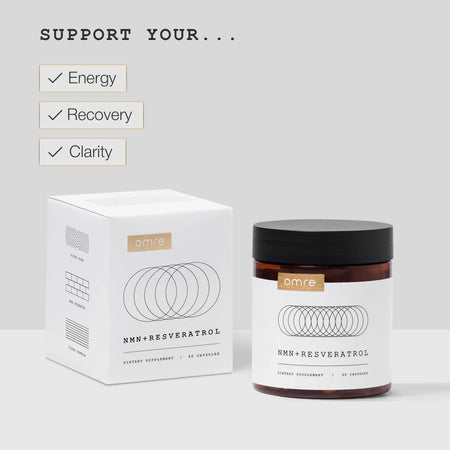Nicotinamide mononucleotide (NMN) and nicotinamide adenine dinucleotide (NAD) are two compounds that have gained significant attention in the field of health and longevity research. As interest in these molecules grows, many individuals are left wondering about their relationship and the differences between them. This article aims to clarify whether NMN is the same as NAD and provide comprehensive insights into their roles in the body.
Is NMN the same as NAD?
No, NMN is not the same as NAD, but they are closely related. NMN is a precursor to NAD, meaning that NMN is converted into NAD in the body. While NMN is a single nucleotide, NAD is a coenzyme that plays a crucial role in cellular metabolism and energy production. Essentially, NMN serves as a building block for NAD synthesis.
To understand the relationship between NMN and NAD, it’s essential to delve into their biochemical roles and the processes through which they function in our bodies.
What is NMN?
Nicotinamide mononucleotide (NMN) is a nucleotide derived from ribose and nicotinamide. It has gained popularity in recent years due to its potential benefits in promoting longevity, enhancing energy metabolism, and improving overall health. NMN is found naturally in a variety of foods, including broccoli, cabbage, cucumber, and edamame.
Research indicates that NMN supplementation can boost NAD levels in cells, leading to improved cellular functions. Increased NAD levels are associated with enhanced energy production, DNA repair, and cellular stress resistance, making NMN a compound of interest for those seeking to optimize their health and longevity.
What is NAD?
Nicotinamide adenine dinucleotide (NAD) is a coenzyme found in all living cells. It plays a pivotal role in various biological processes, including metabolism, energy production, and cellular repair. NAD exists in two forms: NAD+ (oxidized form) and NADH (reduced form). The balance between these two forms is crucial for maintaining cellular homeostasis and energy metabolism.
NAD+ is essential for converting nutrients into energy, as it acts as a shuttle for electrons in the electron transport chain during cellular respiration. Additionally, NAD+ is involved in various enzymatic reactions, including those carried out by sirtuins, a family of proteins implicated in aging and metabolic regulation.
How NMN Converts to NAD
The conversion process of NMN to NAD involves several enzymatic steps. When NMN is ingested, it is rapidly taken up by cells and converted into NAD+ through a series of reactions. This process is facilitated by the enzyme nicotinamide mononucleotide adenylyltransferase (NMAT), which catalyzes the addition of an adenine moiety to NMN, forming NAD+.
This conversion is crucial as NAD+ levels tend to decline with age, contributing to various age-related health issues. Supplementing with NMN is believed to counteract this decline, thereby enhancing NAD+ levels and supporting overall health and longevity.
The Benefits of NMN and NAD
Both NMN and NAD have shown promise in various studies, particularly in areas related to aging and metabolic health.
1. Increased Energy Levels
Boosting NAD levels through NMN supplementation may enhance energy production in cells, leading to increased vitality and reduced fatigue. This is particularly beneficial for older adults experiencing age-related declines in energy levels.
2. Improved Metabolic Health
NAD is critical for metabolic processes, including glucose metabolism and fat oxidation. Research indicates that increasing NAD levels can improve insulin sensitivity and support healthy blood sugar levels, making NMN a potential ally in managing metabolic disorders.
3. Enhanced DNA Repair
NAD+ is essential for the activity of enzymes involved in DNA repair. By supporting NAD+ levels, NMN may help maintain genomic stability and reduce the risk of age-related diseases associated with DNA damage.
4. Neuroprotection
There is evidence suggesting that NMN may have neuroprotective effects, potentially reducing the risk of neurodegenerative diseases. By increasing NAD+ levels, NMN could support neuronal health and function, enhancing cognitive performance.
Sources of NMN and NAD
While NMN can be found in certain foods, such as vegetables and fruits, the levels are relatively low. For individuals seeking to increase their NMN intake, supplements are available in various forms, including powders and capsules. As for NAD, the body synthesizes it from precursors like NMN and nicotinamide, so ensuring adequate intake of these precursors through diet or supplementation is essential for maintaining optimal NAD levels.
Conclusion
In summary, NMN and NAD are not the same compounds, but they are intricately linked. NMN serves as a direct precursor to NAD, playing a vital role in the synthesis of this crucial coenzyme. Understanding the relationship between NMN and NAD is important for anyone interested in optimizing their health, particularly in the context of aging and metabolic function. As research continues to unfold, NMN supplementation may provide a promising avenue for enhancing NAD levels and supporting overall wellness.
As always, individuals should consult with healthcare professionals before starting any new supplement regimen to ensure safety and efficacy.
Stay Sharp, Stay Energized, Stay Ahead
Aging doesn’t have to slow you down. NMN + Resveratrol is your key to sustained energy, sharper focus, and long-term vitality. Whether you're a high performer pushing boundaries, a biohacker optimizing every aspect of life, or a parent looking to keep up with the demands of daily life, this powerful combination fuels your body at the cellular level.
Backed by science and trusted by those who refuse to settle for average aging, NMN + Resveratrol helps you stay ahead—today, tomorrow, and for years to come.
Experience the benefits for yourself. Start your journey to better aging now!
Try NMN + Resveratrol Today!
NMN + RESVERATROL
Cellular NAD+ booster with ultra‑pure NMN and Resveratrol, at research‑backed doses.*
Read more:


